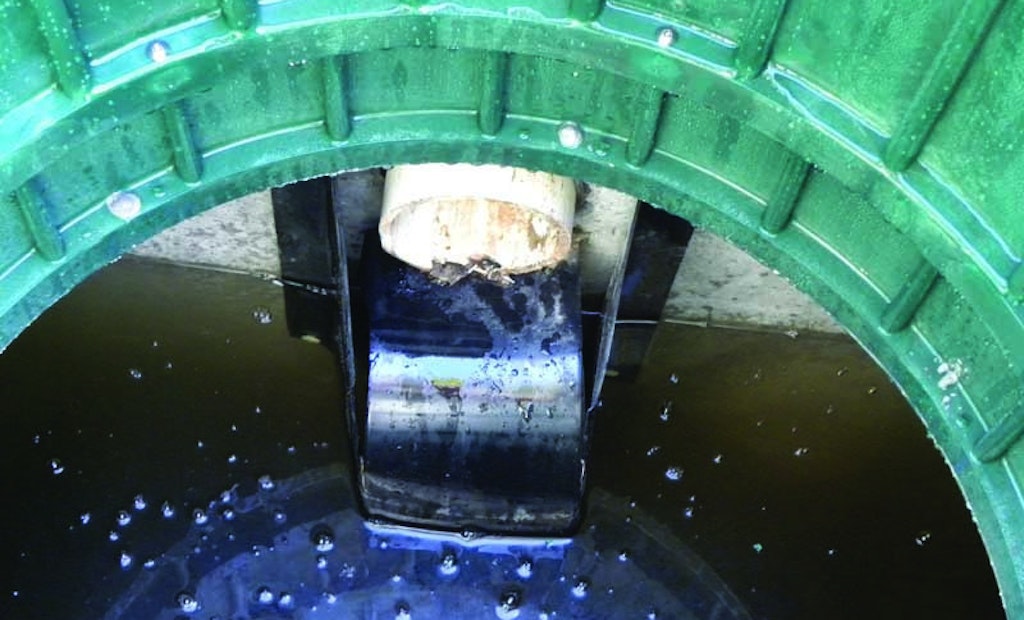
Interested in Alarms/Controls?
Get Alarms/Controls articles, news and videos right in your inbox! Sign up now.
Alarms/Controls + Get AlertsAs onsite industry veterans, we sometimes take for granted that by now everyone has a good grasp on certain concepts and there’s no need to cover “that” again. Then we get a question that makes us rethink what we need to discuss.
Case in point: an inquiry about whether there is actually a need for an inlet baffle in the septic tank as long as there is not a place for toilet paper to hang up and plug up the inlet. Apparently some people in the industry do not recognize the need for both inlet and outlet baffles and develop their own creative solutions to get around the plugging problem.
DIRECT THE WASTE
Inlet baffles are needed for proper performance of the septic tank. Raw sewage from the residence is directed by the baffle downward into the middle zone of the septic tank. This means the effluent follows a tortuous path through the tank, which provides the necessary detention time for the larger solids to settle out.
This results in formation of the sludge layer on the bottom of the tank where some solids are broken down while the rest remain to be removed when the tank is properly cleaned. This is why we view this area as the first part of the treatment process. The inlet baffle also prevents floating scum from plugging the inlet pipe.
A baffle is also necessary at the outlet end of the tank. It allows sewage effluent to flow out of the tank, while retaining the floating scum made up of grease and soap residue in the tank to be removed when the tank is cleaned.
To perform these functions properly, baffles must have the proper submergence and proper height above the liquid level in the tank. This allows both the settleable and floating solids to be captured in the tank and not allow them to move downstream. Today we have effluent screens located in the outlet baffle to help prevent larger solids from moving downstream. This is a big improvement from just a few years ago but does not affect the need for properly sized baffles at both inlet and outlet.
Properly sized baffles require the following:
- The inlet baffle must be submerged at least 6 inches under the liquid level but not deeper than 0.2 times the liquid depth to prevent the inflow from disturbing the bottom sludge layer and causing solids to go into suspension.
- The outlet baffle must extend farther below the liquid surface to ensure effluent sent downstream is coming from the middle clear zone. This provides storage area in the tank for both sludge and scum. This is why newer cleaning recommendations call for cleaning the tank if the total depth of the scum and sludge equals or exceeds 25 percent of tank liquid depth. So if the liquid depth in a tank is 60 inches, the tank needs to be cleaned when the total of sludge and scum are greater than 1/4 x 60, or 15 inches.
PREVENTING CORROSION
The tops of both baffles must extend far enough above the liquid level to hold the scum in the tank and to prevent it from plugging the inlet. Here, the standard is again 0.2 times the liquid depth. There must be air clearance of at least 1 inch between the top of the baffles and tank cover to provide for movement of gases and proper venting. Without the clearance, there will be excessive corrosion and deterioration due to accumulation of gases around the outlet baffle. There should be a 3-inch drop from the inlet pipe to the invert of the outlet pipe. Septic gases are heavier than air and will accumulate in the low area.





